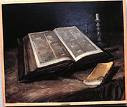
Neo Classicism spawned in Europe and in the United States sometime during the late 18 and 19th centuries, and continues to be practiced in present time. During this period, the artist began to emulate those artists of 'Realism', harkening back to the Renaissance and the ancient Greeks.
While Expressionism and Impressionism began to predominate the art world at the end of the 18th century and well into the next, neo-classicism remains and, in most 'artistic circles' has been ridiculed for returning to an old form rather than moving forward.
Needless to say, however, the neo-classicist artist is well educated and quite familiar with the Canon; well versed... these artists have produced stunning work, and at the same time, can splash water colours across a white canvas and call it "art", i.e, Sidney Pollack, Andy Warhol's screens, etc. Original, perhaps, an advancement in Art?...but to my mind, haphazardly splashing paint on a canvas or screening photo's like Warhol's famous Marlyn Monroe with the swiftness of an assembly line, (Earning absurd amounts of money) makes me wonder if it really is 'Art'?
One of my favourite 'modern' artists is the Austrian, Gustave Klimt. Klimt began as a portrait painter, painting the rich, royalty, famous and infamous, to then branch off and start a new movement which eventually led to German Expressionism.
When one views his work, we can see he is informed of arts foundations, educated in Classicism. In fact he has created some of the most stunning paintings during and after the First World War.
The stunning painting above is the work of an American, Frederic Edwin Church (1826-1900) who was predominantly a Landscape artist. Church is regarded as a neo-classicist because of his aversion to all things 'modern'. But when viewing his many works can see that his innovation, during this time, was his use of colour, that seems and does draw you into the painting..bright, visceral, at times breath-taking.
Let's face it, I'm a 'tiny bit' biased, because I love most of the artist's of the Romantic period: Fredric Chopin, Beethoven, Wordsworth, Lord Byron. Keats, Blake, and The Pre - Raphaelite's.
In no uncertain terms, Church has joined the fray of my list of the GREAT Romantics...as is the foundational tenet of the Romantic View: the never-ending search for the Ideal in art.
If so inclined, google Fredric Edwin Church - and you'll be astonished...


No comments:
Post a Comment